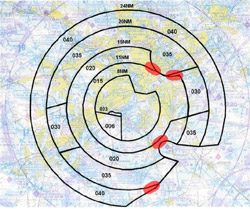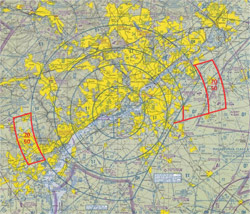 Click the image for a larger version.
Click the image for a larger version.
The FAA’s proposed redesign of the Philadelphia Class B airspace would grab more airspace than necessary and is so complex it could lead to inadvertent airspace incursions, AOPA told the FAA in formal comments filed March 16. The association submitted a simplified alternative that would still contain aircraft arriving and departing Philadelphia International Airport.
“AOPA members have expressed significant concern with the complexity of the design of the proposed Philadelphia Class B airspace,” wrote Tom Kramer, AOPA manager of air traffic services. “A successful Class B design balances the need for simplicity with the need for access in the vicinity of Class B airspace.”
AOPA acknowledged the FAA’s attempt to minimize the impact on general aviation by creating cutouts, but some of the cutouts and corridors are one nautical-mile wide and do not correspond to landmarks or VOR radials. This could lead to “pilot confusion, frustration, and inadvertent airspace incursions,” Kramer said.
The association also joined the Air Force 305th Air Mobility Wing in expressing concerns of expanding the Class B airspace to the east into Alert Area A-220 over McGuire Air Force Base. Both are concerned that could cause more traffic to fly through the area, increasing the potential for midair collisions, especially at a time when flight operations are expected to increase at the base.
 Click the image for a larger version.
Click the image for a larger version.
Instead of expanding into the alert area and extending the outer ring of the Class B airspace to a 24-nm-radius ring, AOPA suggested that the FAA create two Class B extension areas—one to the northeast and one to the southwest.
“Graphics provided by the FAA during the ad hoc process depicted the vast majority of traffic arriving at Philadelphia would be contained within small extension areas to the northeast and southwest,” Kramer said. “There is no need to extend the outermost ring of the Class B airspace uniformly around the entire perimeter. Doing so will unnecessarily increase the size of the Class B without an accompanying increase in containment, safety, or efficiency.”
Pilots are encouraged to submit comments on the proposal by March 26. Comments can be sent to Mark D. Ward, Manager, Operations Support Group; Eastern Service Area, Air Traffic Organization; Federal Aviation Administration; PO Box 20636; Atlanta, GA 30320. Please send a copy of the comments to AOPA.


